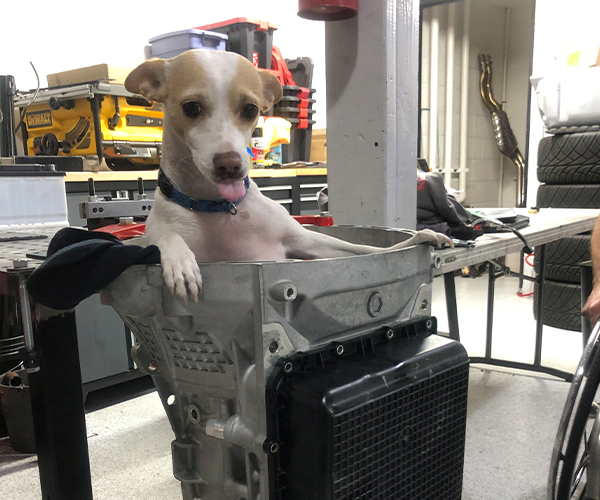Signs to Look Out for During a Test Drive
Traveling by plane may carry too many risks, so you’re in the market for a new vehicle. Whether it’s a car to get you from point A to point B or a commuter vehicle, this is a substantial financial decision. You don’t want to take it lightly. If you’re opting to purchase from an independent seller, you may want to set extra cash aside for a pre-purchase inspection to aid in your decision-making process. However, if you’re going to a reputable dealership, they should provide you with an extensive history report for most certified pre-owned vehicles.
Despite those aspects, the test drive is one of the most critical parts of deciding on a car. Paying particular attention during the test drive can prevent you from purchasing a lemon, saving you thousands of dollars in the long run. What signs should you watch out for during a test drive?

If you’re test-driving a vehicle with around 30k miles:
Test how the car handles
Cars with 30k miles and under are practically new cars, so don’t be afraid to put them to the test. Drive the vehicle on rough roads and see how it responds to speed bumps. Watch how the car handles tight turns. If you notice any issues, it’s important to have the steering and suspension checked.
Good tires can last up to 50k miles.
Do a proper visual inspection of the tires and make sure the treads are evenly worn. After visually inspecting the tires, jump in the car, and check the alignment. While driving on a straight and steady road, make sure your vehicle doesn’t drift to one side.
Do a thorough inspection of the interior of the vehicle. Turn on the vents and make sure they smell fresh. Make a note of any foul or cigarette smells. Check the seats and look under the mats to inspect their condition.
Take note of how the brakes are handling.
Listen out for grinding noises and scraping during your test drive.
If you’re test-driving a vehicle with around 60k miles:
Check for rust and body corrosion underneath the vehicle and on the body. If the rust is in its early stages, it’ll present itself as small bubbles in the paint. Check how long the vehicle’s warranty is because rust and corrosion are usually covered under the manufacturer’s warranty.
Check out the engine sounds.
While on the test drive, put the car in drive and hold down the brake pedal. At the same time that you’re braking, hold the steering wheel to feel for any unusual pulsating or vibrating. Additionally, remove your foot from the brake and drive a bit. Vehicles are typically created to be pretty quiet to an extent. The key is to pay attention to any sounds.
Check the air conditioner to make sure it’s working properly.
If you’re testing during the summer, make sure you verify all fan speeds and ensure the air conditioner stays cold. If you’re testing during the winter, leave the air running long enough to check for any musty or humid smells.
With any vehicle inspection, you should check for warning lights on your dashboard of any type.
If you’re test-driving a vehicle with around 100k miles:
Before starting the drive, check the vehicle’s maintenance records and repair history.
The key is to match the maintenance recommendations in the owner’s manual to see what has been completed.
Make sure your vehicle doesn’t take longer than two to three seconds to start.
If your vehicle takes too long to crank on, it may be an indication that there’s a problem with the starter or battery.
Check for any engine smoke or noise.
Any smoke is considered a bad sign and should be taken seriously. However, also check for unusual smells such as the sweet smell of coolant or burnt engine oil.
Before you start the test drive, check below the vehicle for any leaks. And check the fluids to identify if any of them look low. Low fluids can signal the need for an inspection.
This is also an excellent time to review the interior.
Sit in the seats to make sure the cushions aren’t worn, or there aren’t any tears in the leather. Inspect under the carpets for water or mold.
The test drive for an older vehicle is the best opportunity to see how it handles different elements. Take the car on a trip on the highway and see how it shifts and manages speed. Listen for any weird noises. Take your vehicle through the city to see how our handles stop-and-go traffic.
Most items should be inspected during all test drives. Vehicles with more miles may encounter different types of problems. This list is a helpful reminder of what to look out for. All test drives should begin with you reviewing service records and inspecting the interior and exterior. All warning lights, no matter what the mileage is, should be examined. Also, fluids should never be too low, as this usually indicates a leak. If you have additional questions, don’t hesitate to bring your vehicle into Red Rock Repair for a pre-purchase inspection. Our Las Vegas team would be happy to assist you.
Better Service Starts Here!
We know just how impotant it is to have a repair shop you can trust. Red Rock Repair offers a level of service you wont find anywhere else in Las Vegas!
DIRECTIONS (702) 385-7887